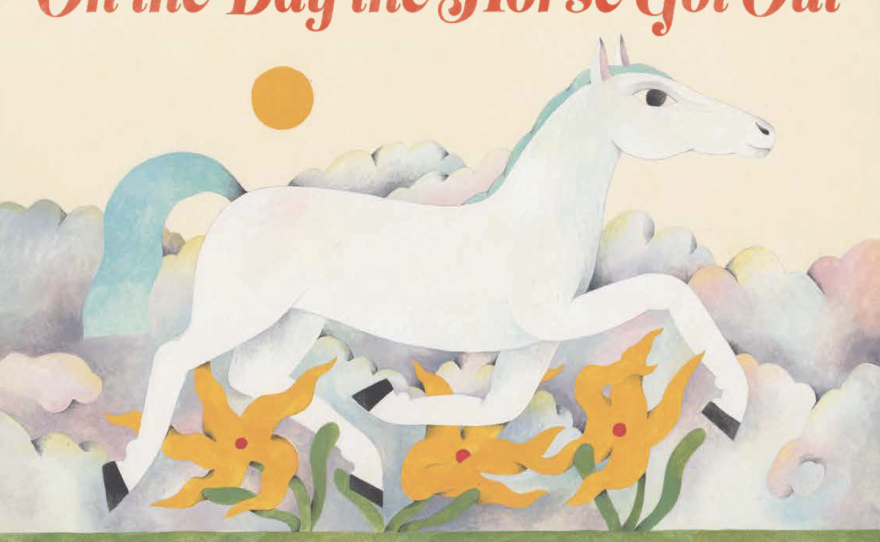"On the Day the Horse Got Out" is a rhyming picture book written and illustrated by Hampshire College graduate and Greenfield resident, Audrey Helen Weber. Weber said she has created "a lot of little self-published books" throughout the years, but this is her first “official book.”
Carrie Healy, NEPM: So, are you a horse lover?
Audrey Helen Weber, author: You know, I wouldn't say that that was, like, one of my main kid interests. I was more interested in the sort of the world of nursery rhymes that was populated by all kinds of different creatures, and how they would interact with each other. And a horse just had so much beautiful momentum, and sort of a gentle strength, that I felt like that was a great animal to work with as the main focus.
Carrie Healy, NEPM: Tell me about the nursery rhymes that inspired you?
Well, I looked particularly at ones that had illustrations because those were one of my many references for making the book. And I looked a lot at the work of Peter and Iona Opie, who did tons of collecting of all the different nursery rhymes with a lot of references, talking about the history and what sort of folk traditions they'd come from.
I wanted to take the ingredients from that resource and scramble them up, and add a lot more open-endedness to the narrative of it, so the pictures themselves would be a useful tool for imagination to look at and tell the little stories, even if a kid looking at the book wasn't necessarily reading the text. So it's pretty sparse in its narrative arc, if you will, but there's a lot more going on within the pictures of the book.
And we should note that you were your own artist as well.
Yes, I consider the drawings and the whole thing "writing" as well, like the style of the work is the tone and emotion. And everything happening within the text is also sort of scripted in a way in my head before I draw.
So this is designed for kids, perhaps ages 3 to 7 maybe?
Well, yeah, I have found, since it has been out, that a 2-year-old really enjoys looking at it, and also my 94-year-old grandmother really loves reading it every day, so I would say it's for all ages. It works great, I think, in a mixed group story time. You can have a bunch of different ages, because there's the language and the rhyming in the text that you can engage with kids that are a little bit more thinking along those lines. And then all the visual pieces are pretty accessible even to the littlest ones.
View this post on Instagram A post shared by Aud (@audreyhelenweber)
Many kids’ books, as you know, are based on folklore or fables, and really have a message of connectedness or a cause and effect. Where do you see your story fitting into that?
I definitely was thinking a lot about how nursery rhymes were written by so many people over such a long period of time. And we don't know really the history of those people, which is often the case when art is handed down to us that was made by women or poor people. And in sort of leaving space in the narrative of my book, I wanted to collaborate with the audience, which is mostly kids. And I'm so interested to get out there and to start reading this book to kids and seeing what they see in the pictures, and seeing what they think it means for the dog to have gone from the beginning to the end and how that character would have changed.
View this post on Instagram A post shared by Aud (@audreyhelenweber)
There are flowers through the book, and they are five-petaled yellow, reminiscent of a star. Is there a significance to that?
Yeah, there is, actually. Good eye. There was a chance in the sort of repetitive pattern of the text to add a bit more atmospheric visual clues to connect this world. So as the horse runs through each sort of stanza of the poem, the horse is focused on a different star-like object.
The first one is, as you noted, a pretty star-like looking beautiful sort of big daisy flower. And then the horse runs to yellow apples, and then it's dusk and the fireflies come out. And I've always been sort of fascinated by the idea that a field of fireflies and the stars look very similar visually but are just fundamentally such vastly different things. And then, the last place when the sun sets for the horse to go to find anything star-like — is up in the sky. So there they go up into the stars, and that sort of added a bit of visual pacing as well.






